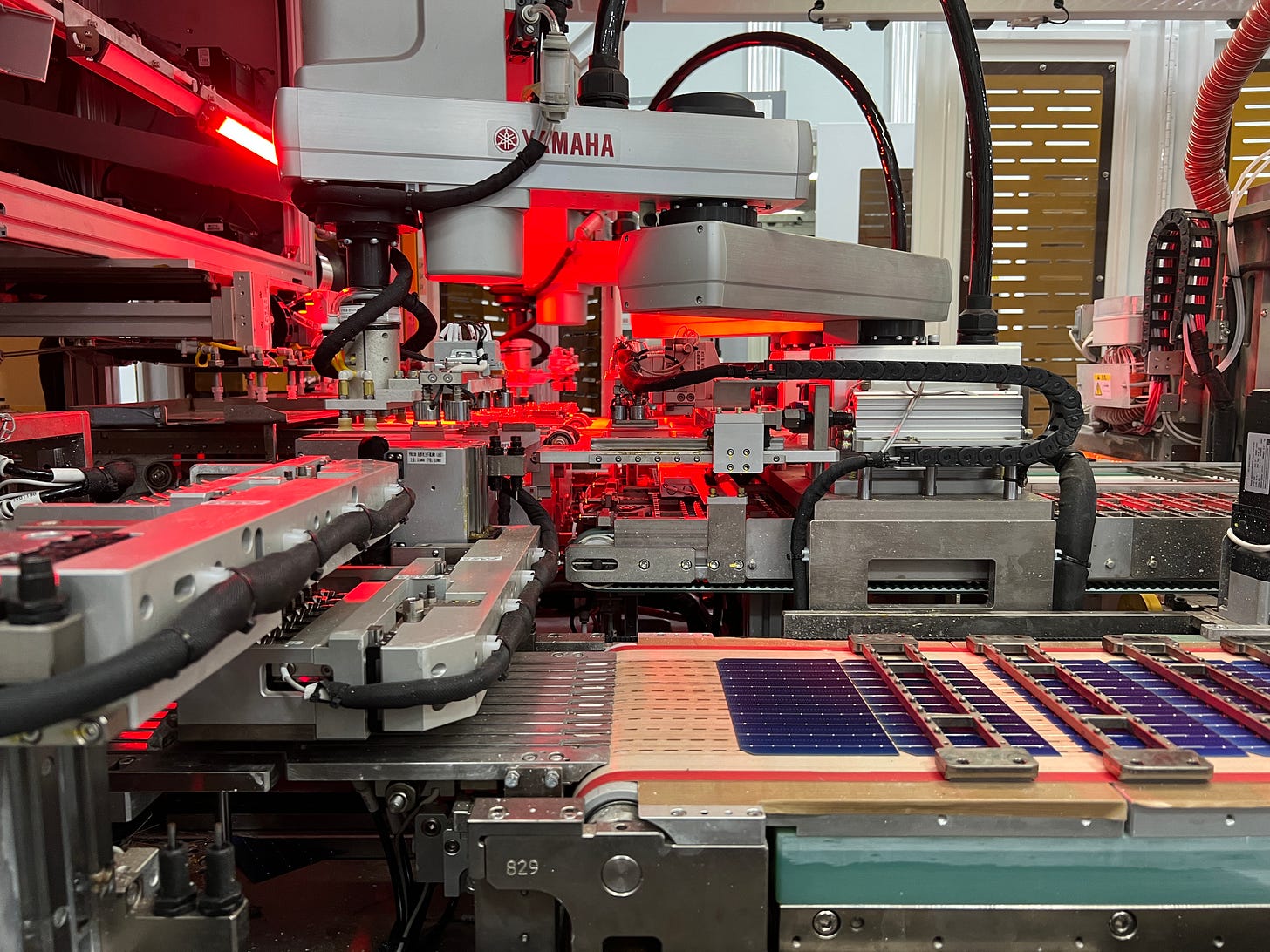Can India Become a Solar Panel Powerhouse?
At a former denim jean factory, a diamond manufacturer moves into solar panels.
Renewables hold the promise to provide more than just energy for India. They can also create jobs and boost manufacturing prowess.
That was clear during a visit I made to the ancient Arabian Sea port of Surat. The city was once the Mughal Empire’s main international port of call. It’s now one of the world’s fastest-growing cities. Surat has over the past half century turned itself into a global hub for diamond cutting, but at least one diamond fortune is now being funneled into solar panel manufacturing.
One of the biggest players in the diamond industry, Shri Ram Krishna Exports or SRK, was founded by Govind Dholakai. He arrived in Surat as a young man in 1964, found his way into the diamond cutting business and started the company with two friends. Now he’s a billionaire.
In 2008, amidst the global financial crisis, Mr. Dholakai looked to diversify the family business. His nephew, Ishver, recently returned from overseeing the company’s U.S. operations in New York City’s diamond district, suggested a move into the solar panel business.
Solar seemed like a business with a future, and panel manufacturing could draw on SRK’s reputation for precision, Ishver figured.
“It’s in our bloodline,” he told me.
After traveling to Germany, Japan and the U.S. to research the industry, Ishver launched Goldi Solar with seed funding from SRK in 2011. Like a handful of other Indian solar manufacturers, Goldi decided not to compete at first with the Chinese in making solar cells themselves or the polysilicon wafers they were composed of.
Instead, Goldi bought solar cells from Chinese companies and assembled them into modules. This was a less technologically challenging, more labor-intensive task playing to India’s strengths, allowing the company to set up in a former denim jean factory near Surat. They even hired the factory manager to run their operations.
Solar project developers snapped up these modules, arranging them into the massive arrays in the deserts of India’s northwest I visited.
India’s solar sector accelerated dramatically.
“It was getting cheaper and cheaper,” said Bharat Bhut, who co-founded Goldi and serves as a director. “The lower the price, the more the viability of solar power went up.”
The problem remained, though: Like much of the world, India was spending huge sums to purchase solar panels from China. What earlier was a boon increasingly has felt like dependency on a country with which India has a raft of border disputes and fought a full blown war in 1962.
In 2020, a conflict erupted between Indian and Chinese troops at a flashpoint in the Himalayas. The clash left 20 Indian soldiers and an unknown number of Chinese combatants dead. In the aftermath, India has worked to reduce dependency on Chinese technology.
That has meant imposing duties on imported solar equipment and a drive to build a domestic industry of its own. This has unleashed an avalanche of investment by Indian companies into solar panel manufacturing, including Goldi.
Goldi is now building a panel manufacturing facility to feed its module assembly plant. More than a dozen other Indian companies are also starting up or dramatically boosting solar panel manufacturing, including the U.S. maker First Solar, which is building a panel factory in southern India. Under an agreement with the U.S., all of the India-based manufacturers will have unimpeded access to the U.S. market, giving them an edge against Chinese imports that are subject to U.S. anti-dumping tariffs.
Currently proposed plans would have India producing enough panels and modules to meet domestic Indian demand by 2025 with some left over for export, according to one industry analysis.
Several of India’s biggest energy players are also looking into manufacturing the wafers that make up the cells, including even the state-controlled coal giant Coal India Ltd.
But the tariffs will push up solar energy costs, already headed higher amid supply chain disruptions from Covid and the Ukraine war. Decades of decline, they have risen about 20 percent in the past year.
At the recent World Economic Forum Annual Meeting in Davos, Indian renewable energy developer ACME Group signed a memorandum of understanding worth $7 billion with the state government of Karnataka to develop an integrated solar to green hydrogen to green ammonia facility that will produce 1.2 million tonnes a year of green hydrogen by 2027. I visited ACME’s pilot green hydrogen facility in the ancient silk road city of Bikaner, at the moment the only working green hydrogen plant in India. It’s tiny, but proves the technology is viable. The question is how scalable is it.
If these fronts develop along the lines renewables have — with the same plunging cost curves — India’s energy transition could gain momentum quickly past 2030.






